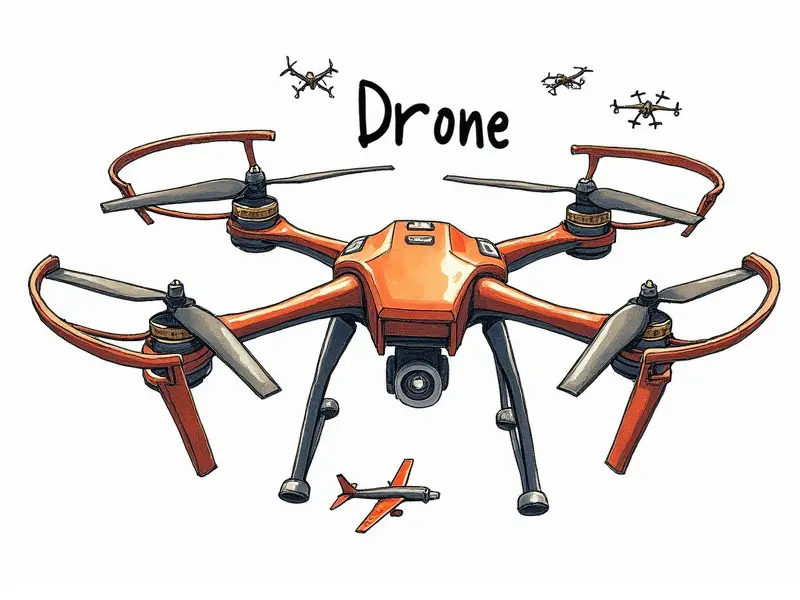Safe drone building practices

Top Safety Tips for Drone Builders
Building a drone can be an exhilarating experience, but it comes with its own set of risks. Ensuring safety is paramount to prevent accidents and injuries during the construction process. Here are some top safety tips that every drone builder should follow:
- Wear protective gear: Always wear goggles or glasses to protect your eyes from debris, and gloves to safeguard your hands.
- Work in a well-lit area: Ensure you have adequate lighting to see all components clearly and avoid mistakes.
- Avoid distractions: Stay focused on the task at hand to prevent accidents caused by lack of attention.
Essential Safety Gear for Drones
To build a drone safely, you need specific tools and equipment designed to protect both yourself and your project. Here’s what every builder should have:
- Safety glasses or goggles: Essential for protecting eyes from small parts and debris.
- Gloves: Provides a barrier against sharp edges, soldering irons, and other tools.
- Vise grips: Secure components to prevent them from moving during assembly.
Safe Wiring Practices for RC Models
Electrical wiring is one of the most critical aspects of drone building. Proper wiring techniques can save you from electrical hazards and ensure your drone functions correctly:
- Use heat shrink tubing: Protect wires from abrasion and moisture.
- Soldering: Ensure proper solder joints to prevent loose connections.
- Label wires: Clearly mark each wire for easy identification during assembly and troubleshooting.
Balancing Performance with Safety in Drones
While striving for optimal performance, it’s crucial not to compromise on safety. Here are some ways to balance these two important aspects:
- Select high-quality components: Opt for parts that meet industry standards and have a proven track record.
- Conduct thorough testing: Before flying, test your drone in a controlled environment to ensure it operates safely.
Must-Know Safety Checks Before Flying
Before taking your drone into the air, there are several safety checks you must perform:
- Battery condition: Ensure batteries are fully charged and free from damage.
- Propeller balance: Imbalanced propellers can cause instability during flight.
- Flight controller settings: Verify that all parameters are correctly configured for your drone’s specifications.
Protecting Your Drone from Electrical Hazards
The risk of electrical hazards is high when dealing with sensitive electronic components. Here’s how to protect your drone:
- Use surge protectors: Prevent damage caused by voltage spikes.
- Keep electronics dry: Moisture can cause short circuits and other issues.
Avoiding Common Drone Build Mistakes
Mistakes during the build process can lead to serious safety concerns. Here’s how to avoid them:
- Inadequate planning: Plan your build meticulously before starting.
- Sloppy soldering: Ensure all connections are secure and well-insulated.
Secure Drone Crafting Techniques Explained
Using the right techniques can make a significant difference in the safety of your drone build. Here’s what you need to know:
- Careful assembly: Take time to ensure each component is properly aligned and secured.
- Use appropriate tools: Employ the right tools for specific tasks, such as screwdrivers and pliers.
Ensuring Longevity and Reliability in Drone Builds
To build a drone that lasts and performs reliably over time, follow these tips:
- Select durable materials: Use high-quality components that can withstand wear and tear.
- Regular maintenance: Inspect your drone regularly for signs of wear and replace parts as needed.
Safe Protocols for DIY Drone Assembly
DIY assembly requires adherence to strict safety protocols. Here’s what you need to know:
- Follow manufacturer guidelines: Always refer to the instructions provided by component manufacturers.
- Work in a clean environment: A clutter-free workspace reduces the risk of accidents.
Preventing Accidents During Drone Build Process
To prevent accidents during the build process, follow these guidelines:
- Wear protective gear: Use goggles and gloves to protect yourself from hazards.
- Avoid rushing: Take your time to ensure each step is completed correctly.
Conclusion
Building a drone safely requires attention to detail, the right tools, and adherence to best practices. By following these guidelines, you can enjoy the process of building your own drone while minimizing risks and ensuring long-term reliability. Remember, safety should always be your top priority.

